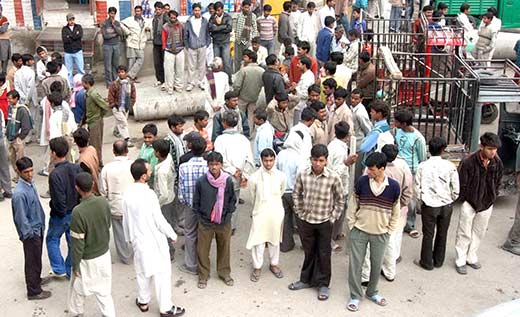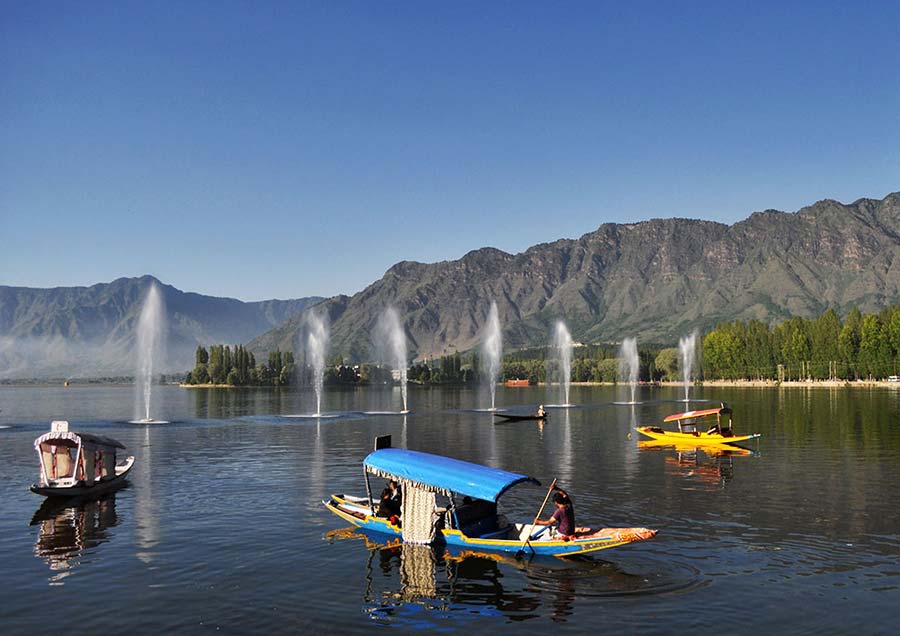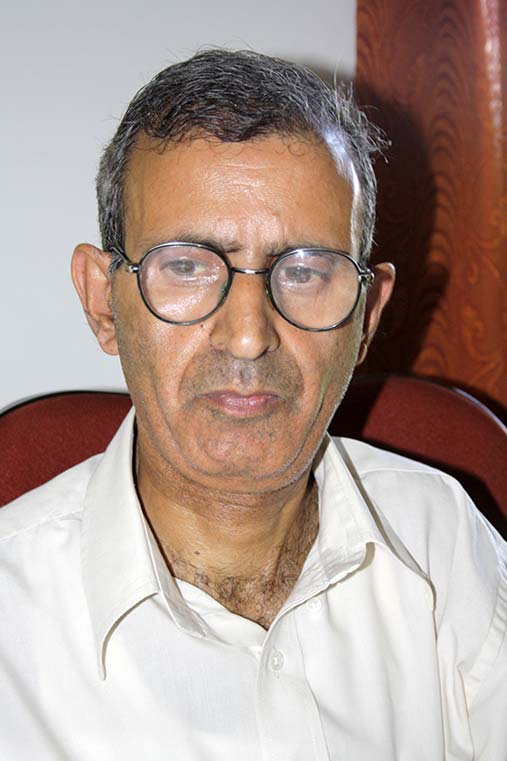A large migrant workforce comes to Kashmir every spring as many locals won’t take some jobs even when they are unemployed. Experts warn of negative effects of such a trend in the long run. Umar Farooq reports

In context of socio-economic development that has taken place in Kashmir, natives show notably low tendency towards what they consider, “menial jobs”, leaving room and jobs for half a million strong outside labour force.
According to the statistical estimate made by the research team from Department of Sociology at University of Kashmir, an approximate number of 4 to 5 lakh migrant labourers arrive annually from various places of India on temporary basis intending to work in Valley.
“Natives take other jobs in place of traditional jobs from past few decades because education has provided them with upward social mobility. This in turn has created a void in form of functional necessities, which lay ground for non-locals to approach in Valley for work,” says Dr. Bashir Ahmad Dabla, HOD Sociology.
“Besides, people in valley leave their traditional occupations as particular occupation is related to a particular social status. A son of barber for instance is not willing to take the same profession even if he remains unemployed for years together and the impression I am giving, happens in actual reality,” he asserts.
Raees Ahmad, a non-local barber hails from Najababad, district Bijnor, Uttar Pradesh. He has a shop at Lal Nagar, Srinagar where he works along with his younger brother. “I used to work with my cousin, before opening this shop. I learnt work from my uncle who has a shop at Lal Nagar bypass road. There are actually more outsiders than locals in this profession and we usually receive more customers,” he says.

Moreover, migrant labourers in large numbers turn to valley as the climate turns pleasant with the arrival of spring and the ending of cold winters. As climate is generally pleasant from March till November the construction work takes place during the same period.
According to Dr. Dabla, on basis of the research conducted by department, laborers turn to valley usually from places like Bihar, Uttar Pradesh, Madhya Pradesh, Rajasthan, and even from Nepal.
Sushinder, a non-local labor, hails from the Ariya region of Bihar and is involved in construction of slabs with a local contractor Abdul Hameed from last three years. Hameed has a team of 15 skilled and unskilled labourers, all from Bihar.
“Contractor Hameed sends some money to Bihar beforehand and we distribute it there amongst ourselves. The advantage in Kashmir is that we are able to save some money. We are paid more here than in other regions and we get work regularly,” Susinder says. “Thousands of labourers migrate from Bihar and search for work on daily basis or work with contractors till November. Then we return back to our places for some time,” he says.
“Migrating to Valley has led a positive impact on these communities and their state of origin. Their life standard has improved, their next generation is getting educated, and their economic conditions have got much better and so on.
“To compare, an alien composition has come in our population which does not have a desirable pattern of interaction with the locals. A demographic change has taken place which means there has been a change in the population composition. When 4 to 5 lakh people arrive at once it becomes a significant population group,” Dr. Dabla says. Hameed does not prefer locals for slab work. “Non-locals work very hard and demand lesser wages as compared to locals. I would have definitely taken locals in this work but they feel a shame in doing many things. They take a lot of time to perform a particular work. Everyone prefers non-locals for work for many reasons,” he says.

Dr. Dabla says this trend has resulted in negative implications. “The occupations that we had in hand have been taken by others. The occupational trades we had in Valley have shifted to other places. The major reason for this trend is that people here consider these occupations downgrade and menial. Several occupations are called petty and unclean occupations and this is the official term and is put in official records,” he says.
He believes the long term implications will be negative. “The money that natives had to take here is taken by others and the extensive patterns that we have studied reveal that non-locals spent not more than 20% of their incomes in Valley. So its welfare implication is in their home society.
“Our society did not realize its negative impact at large, but now the implications are felt and will be increasingly felt in near future because say in a family that had traditional occupation, two people got the job and rest did not and there they realize that their jobs have been taken or are taken by people from outside. Besides, there is very less possibility of getting other jobs in future,” he says.















